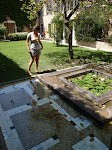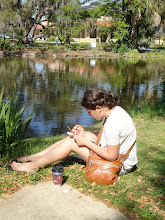How can architecture still define space for inhabitation, and
simultaneously embrace the effects of environmental processes?
All materials are impressionable, preserving environmental and human traces.
Water is the largest contributor to weathering - staining, decay, and
horizontal datum lines left by floods and canal tides. It is the discovery
of prior occurrences in a space that create intrigue and desire for interaction.
Weathered surfaces are defined through particular orientations and layers of materials.
Levels of porosity and degrees of repetition determine the preserving of more or less traces
on a material. Existing surfaces already containing traces are incorporated with new surfaces
to offer the understanding and education of the effects of water. Like the time sensitive effects of water, a place of temporal leisure and travel is created in the exterior environment.
to the south,
and streams (all of which flooded during Katrina). And walking through the city,
water is almost a constant visibility and when not a visibility, certainly a presence.




No comments:
Post a Comment